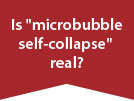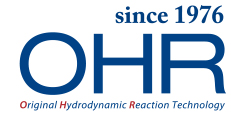Mixer subnav
OHR MIXER Liquid–Liquid, Gas–Liquid, Solid–Liquid — the tougher the environment the more dramatic the results
| Liquid–Liquid mixing and reaction | Gas–Liquid mixing and reaction | Solid–Liquid mixing and reaction |
|---|---|---|
| Emulsification Neutralization Uniformly dispersion Reaction acceleration |
DAF systems Ozone treatment Deoxygenation |
Disintegration Uniform dispersion 1 Uniform dispersion 2 |
Liquid–Liquid
Mixing and Reaction
Emulsification, neutralization, dilution, dispersion, etc.
| Emulsification | Emulsifies for far less, at far lower pressures |
|---|---|
|
Resin manufacturer S had been using emulsification equipment, costing in excess of $200,000 and running at a pressure of 50 MPa. Following a thorough performance assessment, they replaced it with an OHR MIXER at a cost of just $3,800 and running at just 0.5 MPa.

|
|
| Neutralization | Eliminates rapid oscillations in pH in strongly acidic and alkaline solutions |
|---|---|
|
Factory M had been using a tank for neutralization, but inadequate mixing was causing the pH to oscillate rapidly between acid and alkali, which required the repeated addition of neutralizer to control. Introducing OHR MIXERs entirely eliminated this issue and cut neutralizer (in this case caustic soda) usage by some 30%. See graph at right.
When the pH is almost neutral, it reacts sensitively to neutralizer, resulting in large, rapid pH fluctuations between acidic and alkaline. Because conventional equipment cannot adequately mix the neutralizer, far more is required than would otherwise be necessary. 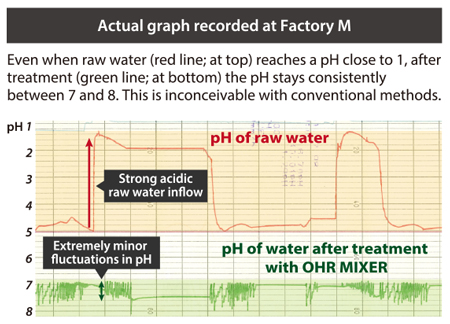
|
|
| Dispersion | Uniformly disperses ultra-low concentrations in a single pass |
|---|---|
|
Cooking oil manufacturer N uses OHR MIXERs in all of its plants to uniformly disperse additives at an ultra-low concentration of 3.0 ppm (parts per million) in a single pass.
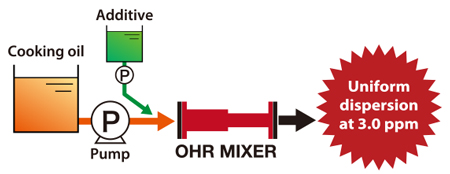
|
|
| Mixing | Uniformly mixes chemicals into liquids |
|---|---|
|
Chemical plant S uses OHR MIXERs to uniformly mix flocculant (here PAC, polyaluminum chloride) into wastewater. The realization of uniform mixing reduced flocculant usage by 50%.
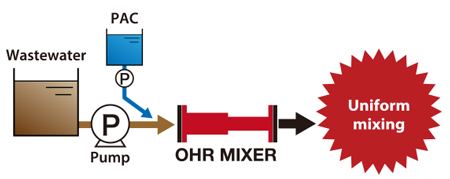
|
|
Other uses:
|
Gas–Liquid
Mixing and Reaction
Micro-/nano-bubble generation, DAF, gas dissolution, etc.
| DAF systems | Greatly improves existing DAF systems |
|---|---|
|
Paper mill N had been using a DAF system with a pressure tank to collect paper fibers for recycling, but had considerable difficulty owing to the poor quality of the microbubbles. After installing the OHR MIXER into the existing DAF system, microbubble quality improved markedly, allowing a much greater proportion of fibers to be recovered.
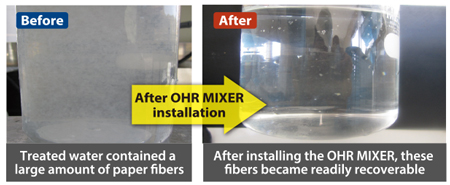
|
|
| Ozone treatment | Far higher efficiency, with no need for an ozone destructor |
|---|---|
|
Paper mill T adopted an OHR MIXER–based microbubble ozone treatment method in order to decolor5,000 m3/day of colored wastewater.
With ozone off-gas reduced to near zero, the ozone destructor was left uninstalled. Initial costs — which would have been around $6 million with conventional methods — were two-thirds lower, at just $2 million. 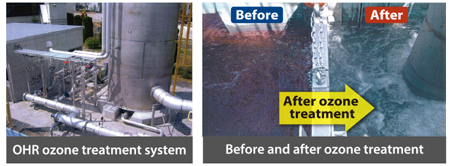
|
|
| Deoxygenation | Greatly reduces N2 gas consumption and treatment time |
|---|---|
|
Chemical plant H had been bubbling nitrogen gas into water to deoxygenate it as part of the manufacturing process, but this required inordinate amounts of nitrogen and as much as 90 minutes of treatment time.
After introducing an OHR-based deoxygenation system, nitrogen gas consumption fell by 79% — equivalent to $19,200 annually.
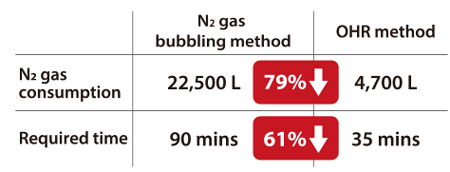
|
|
Other uses:
|
Solid–Liquid
Mixing and Reaction
Disintegration and uniform dispersion
| Disintegration | Breaks up and redisperses intractable aggregates in slurry |
|---|---|
|
Chemical plant M had been unable to disintegrate and redisperse agglomerated carbon powder in slurry. This carbon powder had agglomerated to around 5–10 mm in size. Various different agitators were tried but none proved capable, even with extensive treatment time.
The OHR MIXER was able to successfully disintegrate and redisperse these agglomerates exceptionally well in a single pass. 
|
|
| Dispersion and oxidization | Oxidizes pigments while uniformly dispersing them into solvents |
|---|---|
|
Chemical company D uses OHR MIXERs to oxidize pigments while uniformly dispersing them into solvents, both domestically and overseas.

|
|
| Dispersion | Uniformly disperses powder into oil |
|---|---|
|
Food manufacturer R disperses vitamin C powder into cooking oil. Undispersed powder clogged the filters, which then required cleaning 5 to 8 times every day.
The newly-introduced OHR MIXERs made uniform fine dispersion possible, eliminating the need for filter cleaning and enabling the production line to run continuously. |
|
Other uses:
|

